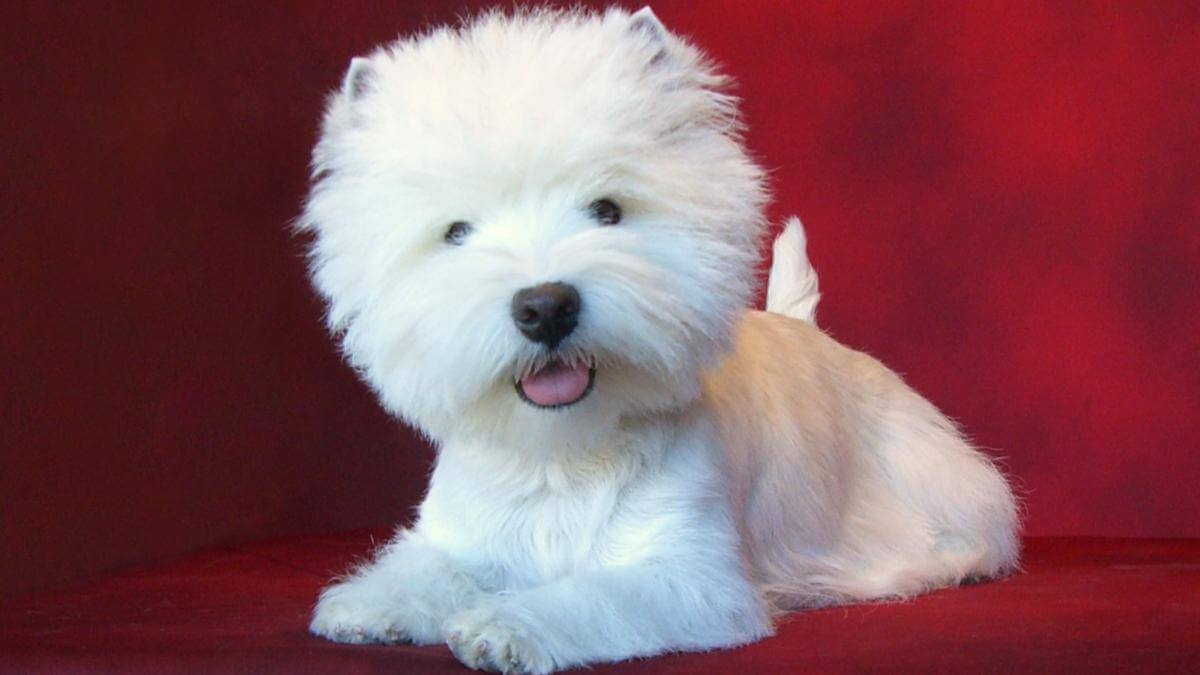


Home » The West Highland White Terrier: Looking Beyond the Grooming

This article was originally published in Showsight Magazine, May 2014 issue.
I was first introduced and fell in love with this incredible breed in 1972 and to say that I’ve seen many changes since then is an understatement. I was a proud breeder/exhibitor for the next 20 years and when I started judging in 1992, the changes continued. Admittedly as the Westie has evolved, some of these changes are an improvement, but unfortunately, we have lost some of the essentials that make a Westie a Westie. As I go through crucial points of the Standard, I hope it is obvious that my passion is preserving the integrity of our breed plus the true Westie type as described in our Standard. First impressions when the dogs enter the ring are important but what you see is not always what you get. Here we must stop to remember the origin of the West Highland White Terrier in his native Scotland and the job that he had to perform in order to earn his keep.
These small, game, well-balance, hardy looking terriers were originally as rough and tough as the terrain they had to traverse in their homeland. Their coat served to protect them from the inclement weather, as well as that rocky, briar filled terrain. Their tenacious attitude and their no small amount of self-esteem made them excellent working dogs for hunting small game such as fox and badger, as well as ensured that they could readily dispatch vermin from the premises. They had to be small enough to get into narrow cairns or go to ground after their prey, be absolutely fearless and possess a big, persistent bark. In short, they were big dogs in a small package. Once the dog goes on the table for exam, the judge finds out if his/her original impressions were correct. According to the standard, the ideal size is 11 inches at the withers for dogs and 10 inches for bitches. There was a time when we saw an increase in size, with Westies in the show ring being well outside these limits, but I think we have done a good job overall in bringing the size back within the guidelines. A Westie should be a dog of good balance and substance but unfortunately, this seems to be one of the things we have lost.
I find that many of the Westies today are lacking adequate bone. The Westie head with its piercing, inquisitive, pert expression enhanced with adequate dark skin pigmentation is a feature that is so endearing to me. When I judge, I always put my hand on the skull to determine if there is good bone and substance there or if the substance is just an illusion created by the masterful groomer with a good teasing comb. Remember looks can be very deceiving and I refuse to be intimidated by that perfectly groomed head. All judges should actually feel the skull to insure that the Westie is of sufficient substance. The handler can always fluff the head back up before he/she moves the dog. Moving on to the neck and front assembly, I must point out that this is another area where we have altered the Westie. In many ways the fronts are better because we don’t see the fiddle fronts of old, but we have lost the definite body overhang and a chest that is very deep and extending to the elbows. The upper arm should be of moderate length, approximating the shoulder blade because if this upper arm is too short or too straight, we will never achieve the desired powerful gait with proper reach and drive that is a hallmark of this breed. I see far too many Westies today with an upper arm that is so short that movement is greatly restricted. Even though the dogs may give the appearance of moving out well, closer evaluation will show that they are taking twice as many steps to get to the same place as a dog who has proper angles that allow for proper reach and drive does.
Needless to say, if we are to see the requisite reach and drive, the rear angles ideally should match the front. I must confess that when I watch other judges examine my breed, I’m often amazed that they are seemingly going through the motions and, in many cases, don’t give adequate attention to the front assembly, thus missing this very important aspect of the Westie structure. The Westie is a compact dog. The body between the withers and the root of the tail is slightly shorter than the height at the withers. Short-coupled. The Westie is not a square breed. When I first started showing Westies they did have a tendency to be rather long backed, but the notion that “the shorter the better” is not correct either. Here again grooming methods can create a dog that looks shorter backed than it actually is while some dogs are in fact shorter than desired. Referring back to the second paragraph, we must remember the job the Westie was to do. If we get a dog that is too short coupled then he isn’t going to be able to turn around in a hole or easily navigate the Scottish landscape. As I briefly touched on earlier, the coat of a Westie is specifically designed for the weather of Scotland.
This is a double coated breed with a harsh outer coat that serves to allow the rain to roll right off, keeping the dog dry and then a softer downy undercoat designed for warmth. This thick coat also provides an element of protection from the possible bite of its prey. Ideally you want a straight hard white coat and a soft, silky coat or one with a tendency to curl is a serious fault. After my preliminary impression of movement, topline, tailset, attitude and having used my hands to confirm or deny those first impressions, I further evaluate the movement in the “down and back”. I think everyone should know basic movement and recognize that Westies should not move too close, too wide, paddle or crab. Good reach and drive is the objective. One last thing I must touch upon and that is Westie Temperament. The Standard says alert, gay, courageous and self-reliant but friendly. There has been a lot of discussion and articles written about sparring so I have to add my two cents. I do spar Westies but never more than 2 or 3 at a time. Once again, referring back to the fact that Westies in Scotland worked in packs and therefore, they had to get along. Aggressiveness is not a desirable trait and should be penalized.
I like to send the dogs I’m sparring out to opposite corners and have them just walk toward each other to the center of the ring but never actually getting that close. The purpose is to have them pull themselves together, up on their toes, ears alert, neck arched, tail up and quivering, assessing the situation. In closing, I would reiterate a couple of points that I emphasize in my seminars, “A good West Highland White Terrier of true type and sound structure should be able to show himself, unassisted and evidence the qualities and spirit specific to the breed”. Lastly and most importantly, I end with the statement ‘That a good dog can be made to look better is the art of grooming and handling That an unsound dog can be made to look good is the art of deception. The future quality of the breed depends on our judges and your ability to know the difference.